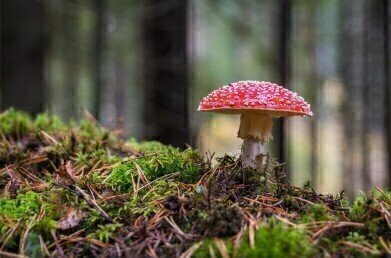Waste Management
An Introduction to Bioremediation
Sep 15 2014
Bioremediation is the latest development in waste management strategies – the technique involves the use of organisms to eliminate of neutralise pollutants from a contaminated site. Traditionally, naturally-occurring organisms have been used to achieve this end. One such example is the use of fungi in mycoremediation, which utilises the fungal mycelia and capitalises on its decompositional properties. This fungus specialises in breaking down plant fibre. Test have also shown it can be beneficial when attempting to remove the harmful toxins found in diesel-contaminated soil. The process of mycofiltration operates on similar principles, albeit in water, as opposed to soil or another substance.
More recently, the advances in the field of genetic engineering have allowed scientists to attempt to create artificial strains of organisms, specifically designed to break down and remove the toxic parts of highly radioactive waste. Though still in its infancy, such a breakthrough could prove to be potentially ground-breaking in bioremediation strategies.
Current methods of bioremediation
Bioremediation techniques can generally be divided into two categories: in situ and ex situ. The former involves treating the contaminated area on site while the latter involves removing it to an alternative location for treatment. The varying methods and branches of bioremediation are manifold and distinct, but some of them include:
- Bioaugmentation - The introduction of strains which are known to have decompositional properties into a contaminated area, with the aim of increasing enzyme concentration, and radioactive degradation as a result.
- Bioleaching - This is aimed at extracting precious or polluting metals from their ore through the introduction of living organisms.
- Bioventing - Through the injection of oxygen or water, the bioremedial properties of naturally-occurring bacteria are enhanced, sometimes with the use of nutrients as well.
- Biosparging - A variant of bioventing, biosparging is useful in addressing petroleum imbalances in soil and groundwater.
- Bioslurping - Taking its name from the slurping of a liquid through a straw, bioslurping combines bioventing techniques with the simultaneous removal of material from the ground.
- Phytoremediation - A time-consuming solution, phytoremediation involves planting plants or other organisms into the contaminated soil, waiting for their roots to absorb the harmful toxins, and then subsequently disposing of them.
Advantages
When hydrocarbons (either from an oil spill or other source) have contaminated groundwater or topsoil, normal practice is to excavate, pump and treat. However, such a process can be time-consuming and expensive. Bioremediation reduces the time and expense which normally goes into cleaning up contaminated sites, thus increasing efficiency.
Disadvantages
As the technology is fairly young, it is still unclear whether or not there may be some unwanted and potentially disastrous side-effects. For example, the article, 21,000 Locations in Canada Contaminated by Toxic Waste, discusses how the unpredictable nature of the bacterial microbes involved may, in fact, lead to the production of cancer-causing elements.
However, such fears are as yet not fully substantiated and further research is being undertaken to determine the full potential (and consequences) of bioremediation.
Events
Apr 22 2024 Hannover, Germany
Apr 23 2024 Kuala Lumpur, Malaysia
Apr 24 2024 Sao Paulo, Brasil
May 05 2024 Seville, Spain
May 13 2024 Munich, Germany













